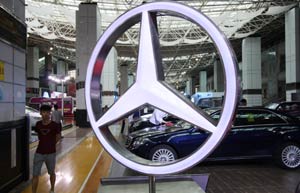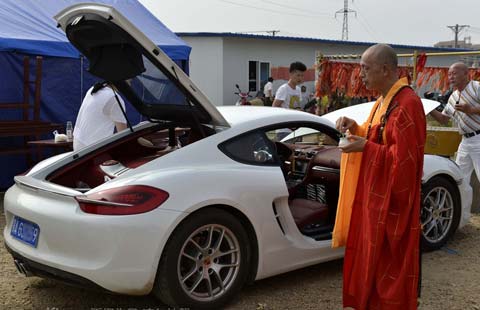High-end trucks set to take bigger share
By Li Fangfang (China Daily) Updated: 2014-08-04 07:00New policies
 |
 |
And by 2015, the State Council has mandated 6 million vehicles with yellow license plates must be taken off the road - those that cannot reach the Euro I petrol exhaust standard and China III diesel emission standard.
The two policies will both lead to increased demand in the short term, said Dressler.
"From a long-term perspective, the heavy-duty truck segment may welcome back big increases in 2018 and 2019 and enter single-digit, healthy and sustainable growth in 2020," he said.
He said many Chinese logistics companies are now paying more attention to total operating costs rather than just the one-time investment for purchase of a vehicle.
As well, "consolidation of the logistics sector will also give a boost to the heavy-duty truck segment as now there are too many small or tiny logistics companies", said Dressler.
To support the consolidation and help companies have bigger fleets, Dressler suggested stronger efforts in financing and more innovative business models.
"After-sales service quality also affects a logistics company's business efficiency."
With more environmental concerns, Dressler said that the government should be the key driver in modernization of heavy-duty trucks on the road.
"Exhaust limits, as well as green technologies, can help decrease pollution," he said. "Though the new emission standards will lead to a sales drop at the beginning."
Overseas market
Though the domestic market is tight, Dressler said it's hard for Chinese truck makers to find out opportunities overseas. The ratio of exports is still very low.
"European and US markets have overcapacity. More opportunities come from emerging markets in Southeast Asia, the Middle East, North Africa and South America," said Dressler.
He said Chinese truck makers should first learn how to enter new markets with different, tailored strategies.
"Second, the key to localization is how they can get the right position for their brands among competitors," he said. "Last but most important, Chinese truck makers should put heavy efforts on services, product quality and dealer networks."
"Brazil and Russia are two important markets with huge potential to have CKD (complete knocked down) production," he added.
- China's July money data cast doubts on recovery's durability
- New insurance solution for disaster relief in China
- China to sell fruit and vegetables to Russia
- Indonesian airline steps up services for China travelers
- China's property investment continues to slow
- Anti-dumping duty for Indian optical fibers
- Dreamland for kids opens this week
- China's fixed asset investment rises 17% in July















